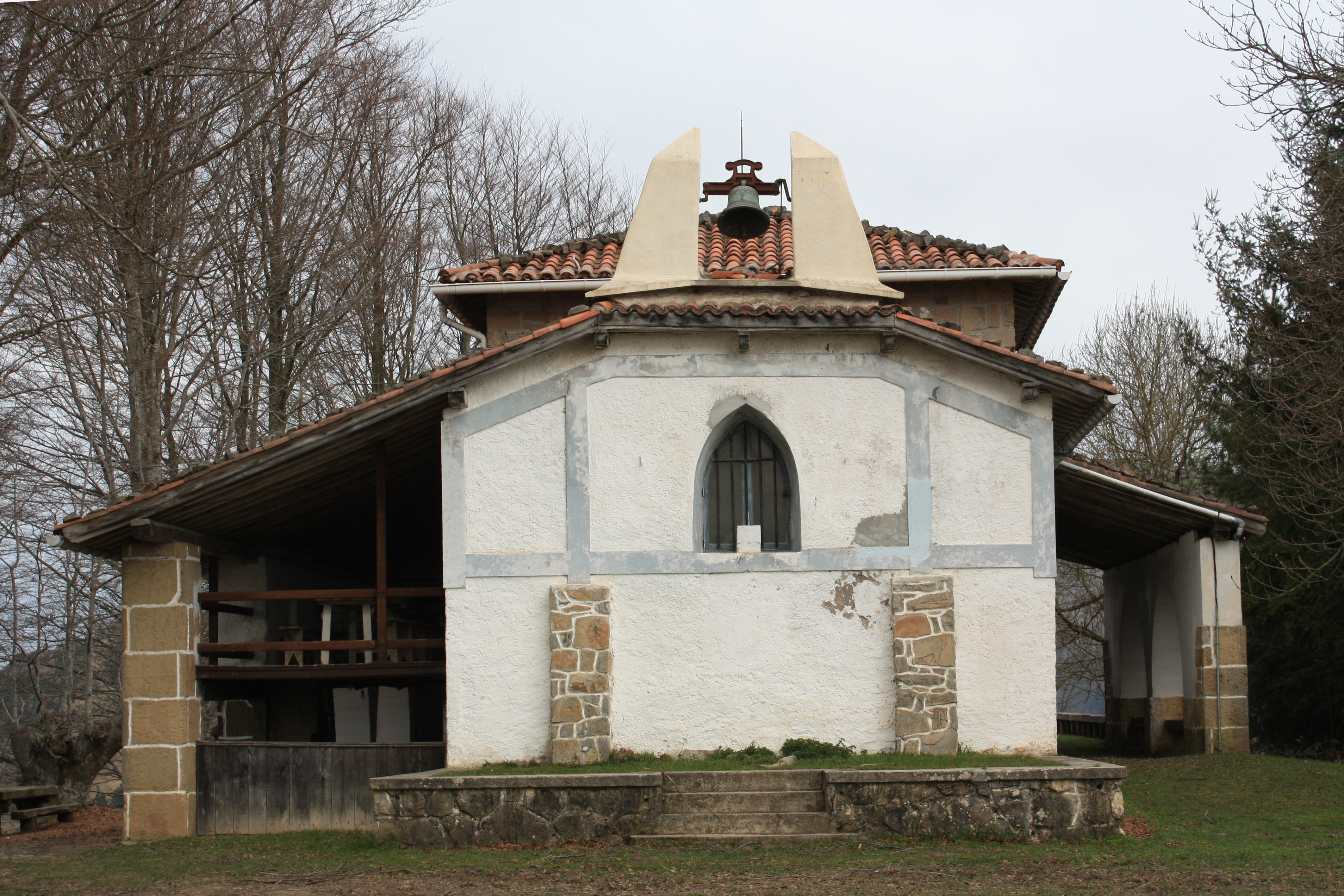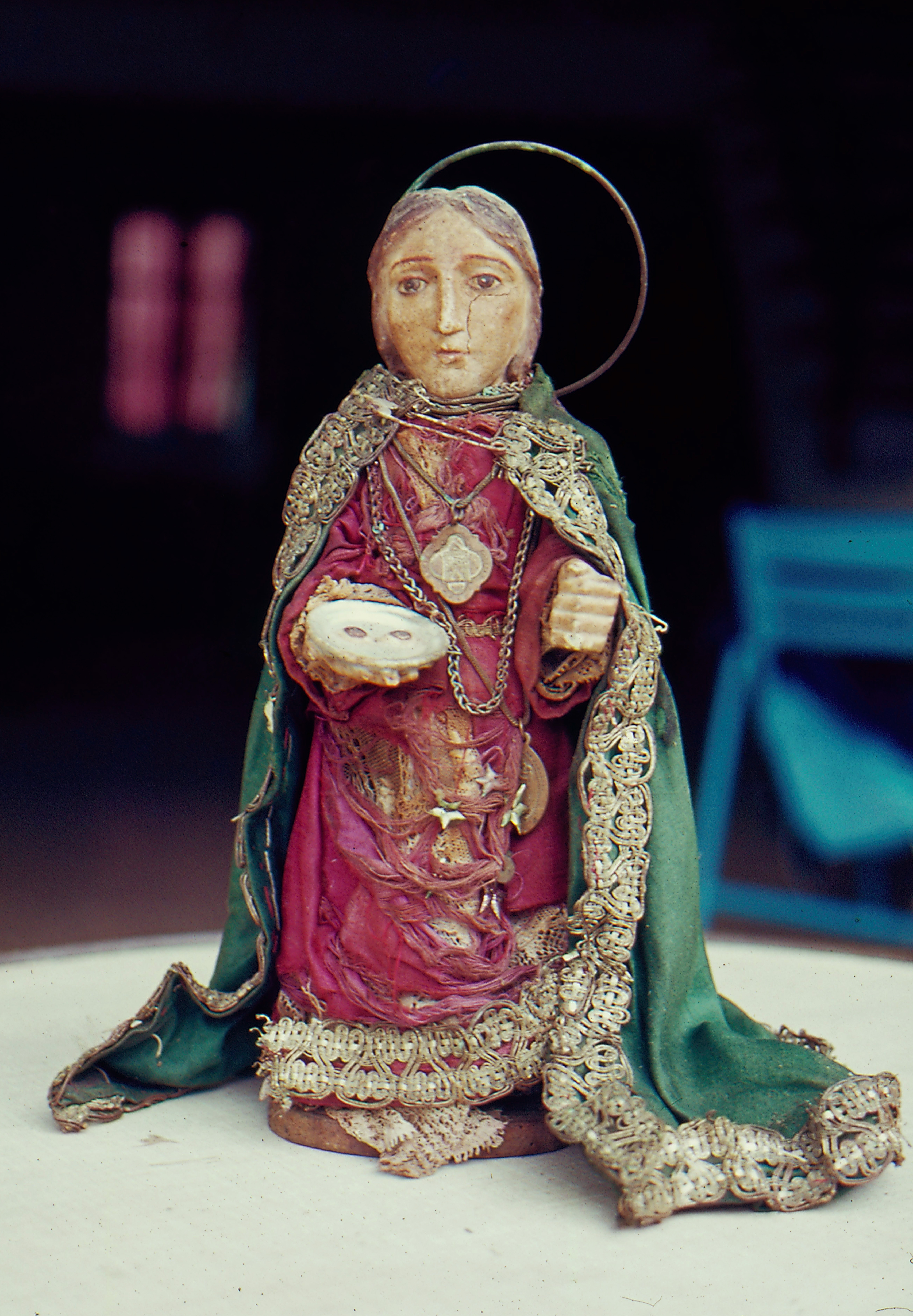Archives
It is a meadow under the hill of Belatxikieta, which had a small, damp, nice beech forest. Very close to it, seven sheep barns remain from the times when animal husbandry was strong. The place was chosen by the locals due to its excellent opportunities for this profession. From the Middle Ages the area was full of meadowlands, shelters, small streams, and mounds and herds full of wet grass for the cattle to graze.
On the other hand, the surrounding area was home to quite a few harmful beasts. To deal with them the pastors from Mugarra to Aramotz joined together in assemblies (azeri-batzarrak) to deal with the problem. These assemblies were held one year in Mugarra and the following year in Belatxikieta. In one of those assemblies, Don Emiliano Zuloaga, who was the new landowner in the vicinity of Zazpitxaboleta, joined together, as he saw that these pastors were concerned that there was no hermitage in the area. We must remember the strength of the Christian faith at the moment.
The parish has historically been of fundamental importance in the administrative and political organization of the Lordship of Bizkaia; there is, moreover, another institution, of a more reduced scope, which in certain rural areas, for instance in Durango, Arratia Valley and environs, has likewise played a basic role: namely, the confraternity, or kofradia.
These confraternities are not devoted to a religious or professional purpose, but they are rather associations of households or families, organized administratively at the neighbourhood level, with a view to provide an adequate response to communal needs. They operate independently of the municipal administration, although some decisions ought to necessarily be made at that higher level. Confraternities are, however, institutions which probably predate the parish.

Hermitage of Our Lady of Kizkitza. José Zufiaurre.
The hermitage of Our Lady of Kizkitza stands on a promontory between the village of Itsaso (Gipuzkoa) and the mountain pass of Mandubia. The image of the Virgin is placed on a fishing vessel at the main altar. It seems odd at first glance, but she is there for a reason. (more…)
Saint Lucy, or Saint Lucia, was born in Syracuse (Sicily-Italy). According to ancient legend, she was tortured during the Diocletianic persecution, c. AD 303. Lucy’s mother arranged her daughter’s marriage to a young man of a wealthy pagan family. One day both women left on pilgrimage to Saint Agatha’s shrine at Catania in hopes of a cure for the sick mother. While there they listened to the gospel account of Jesus healing a bleeding woman as she touched the edge of his cloak. In an act of faith, Lucy touched the martyr’s sepulchre and foresaw her mother’s recovery as well as her own future martyrdom. Back in Syracuse she renounced matrimony and distributed her riches among the poor. Lucy’s betrothed reported her to Paschasius, the Governor of Syracuse, for being a Christian. Paschasius arrested her and took her before the Tribunal, who sentenced her to death. Prior to her passing, she foretold she would be the guardian of Syracuse. A church was built above her tomb and soon became a Christian place of pilgrimage. (more…)





